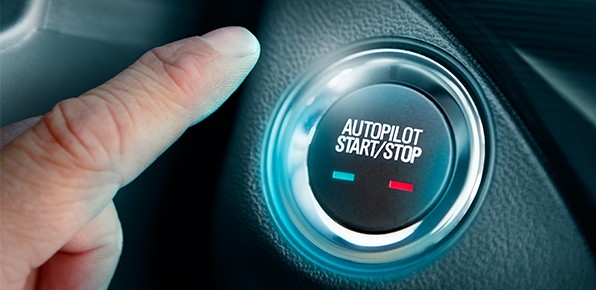 United States (English)
United States (English)
Shopping Cart
Empty Cart
Part No: {{entry.product.code}}
Quantity: {{entry.quantity}}
Total {{cartInfo.totalPriceWithTax.value | currency:"$"}}
Total {{0 | currency:"$"}}
 United States (English)
United States (English)
Part No: {{entry.product.code}}
Quantity: {{entry.quantity}}
Total {{cartInfo.totalPriceWithTax.value | currency:"$"}}
Total {{0 | currency:"$"}}
Asia Pacific
Europe, Middle East, Africa
 România (Română)
România (Română)
 European Union (English)
European Union (English)
 België (Nederlands)
België (Nederlands)
 Belgique (Français)
Belgique (Français)
 France (Français)
France (Français)
 Deutschland (Deutsch)
Deutschland (Deutsch)
 Italia (Italiano)
Italia (Italiano)
 Nederland (Nederlands)
Nederland (Nederlands)
 Polska (polski)
Polska (polski)
 Россия (русский)
Россия (русский)
 South Africa (English)
South Africa (English)
 España (Español)
España (Español)
 Україна (українська)
Україна (українська)
 United Kingdom (English)
United Kingdom (English)
 Česko (Česká republika)
Česko (Česká republika)
 United Arab Emirates (English)
United Arab Emirates (English)
North America
For many of us, it’s hard to imagine a time when seatbelts and airbags weren’t standard equipment on new vehicles. But as with any new advancement, these safety features that we think of as indispensable were at one time just an idea that needed years of development and testing to make it to the marketplace.
The same process is taking place today. Technologies that sounded far-fetched just a few years ago are now starting to show up on dealer lots. These enhancements promise to not only improve driver and passenger safety but could also reduce traffic deaths. Read on to learn about the latest safety advancements that might be on your next new vehicle.
Check out these emerging advancements that manufacturers are starting to implement in various models. Please note that each manufacturer may implement these technologies in their vehicles in different ways. For example, a warning alert may be a sound or could be a vibration in your seat or steering wheel.
Also, be aware that all of these features may not be on all of the vehicles in a manufacturer’s lineup. Certain features may only be available on specific models or as part of different packages offered by the manufacturer. If you are interested in a specific feature, be sure to check the manufacturer website or consult your dealer.
Using road markings, a lane departure warning system gives you a warning if you stray too far to either side of your lane without using a turn signal. Some advanced systems step in with automatic steering or braking maneuvers to correct the situation. This technology could greatly reduce single-car accidents that occur when the car leaves the road and the driver over corrects.
Aiming to curb accidents due to drivers not seeing other cars or objects in their blind spot, blind spot monitoring is like having a second pair of eyes when making a lane change or other maneuver. This technology detects cars that travel into your blind spot and alerts you to their presence with an audible or visual signal on your side mirror.
Looking to reduce the number of rear-end accidents, this emerging technology analyzes the speed of vehicles in front of a car and triggers an alert when sudden changes occur. Some collision prevention systems sound an alert while advanced systems may automatically apply the brakes to avoid trouble.
While rearview cameras have been added to many models the past few years, look for advancements in this component. Manufacturers are beginning to offer cameras with enhanced perspectives like wide-angle views. Many systems sound an alert if the vehicle is getting too close to an object – no more running into the bike that your kid left in the driveway! Note that by the 2018 model year, federal law mandates that all vehicles less than 10,000 pounds come equipped with a backup camera.
With automatic parking, you can say goodbye to the nerve-racking act of parallel parking. This useful system steers the vehicle into the parking spot. On many systems, the driver has to operate the brake pedal and follow some simple instructions but the car’s computer handles the hard part of maneuvering the vehicle into the spot.
Cruise control has been standard on most models for many years, but the next generation of the technology is making its way to the showroom. Adaptive cruise control works like traditional cruise control to keep a steady speed but it also senses traffic patterns and slows or speeds up your vehicle to maintain a safe distance between vehicles in the same lane.
To implement these amazing technologies, manufacturers rely upon cameras, sensors and radar. Depending upon the specific system, it could use one or a combination of these devices to sense traffic conditions and issue alerts and/or corrective actions.

Keep in mind that regardless of the advanced technologies in your vehicle, it is your responsibility as a driver to maintain control and be aware of your surroundings at all times. Don’t rely solely on the safety features of your vehicle to keep you safe. Between your driving experience and your vehicle’s safety features, you and your passengers can stay safe on the road.
Also, be sure to understand the new technology on your vehicle. When buying a new vehicle, ask for operating instructions on any technology that you aren’t familiar with. Don’t worry about how you look – just like in school, there are no dumb questions.
Learn more about quality auto parts, find your car part, or find a local car repair shop today.
The content contained in this article is for entertainment and informational purposes only and should not be used in lieu of seeking professional advice from a certified technician or mechanic. We encourage you to consult with a certified technician or mechanic if you have specific questions or concerns relating to any of the topics covered herein. Under no circumstances will we be liable for any loss or damage caused by your reliance on any content.